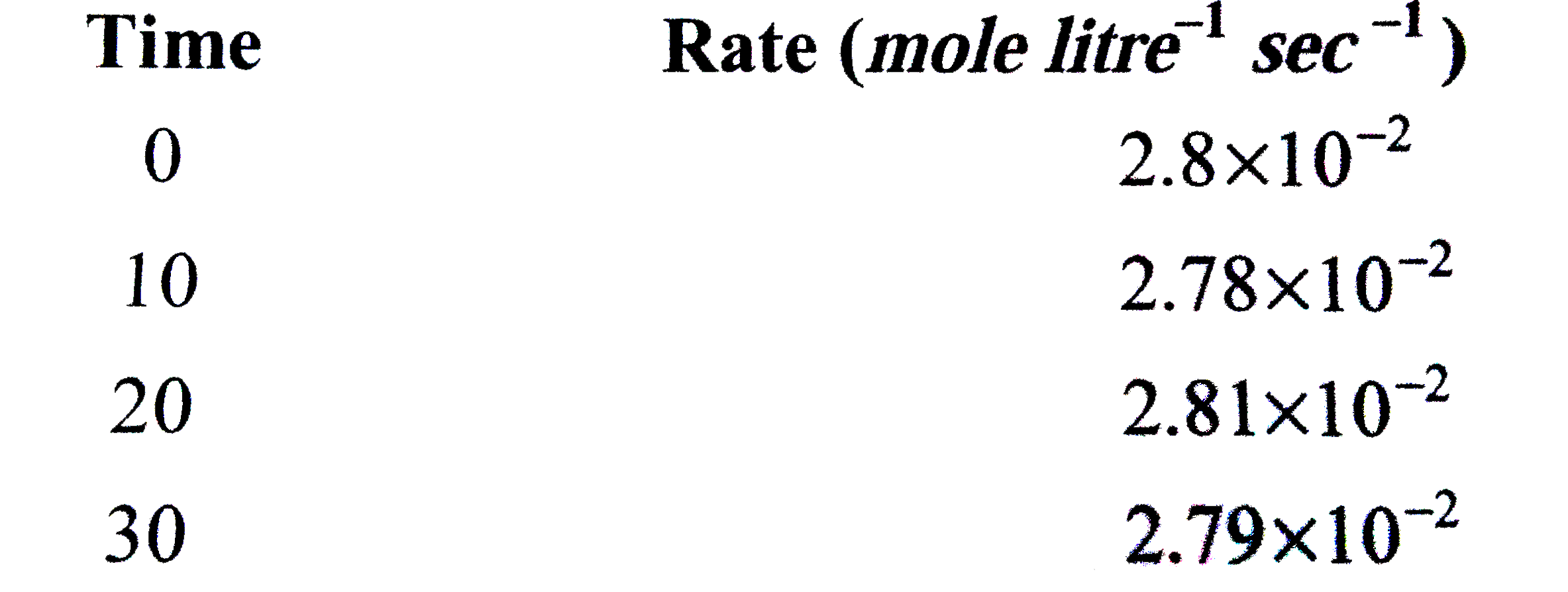The rate of a gaseous reaction is generally expressed in terms of dPdt. If it were expressed in terms of change in number of moles per unit time (dndt) or in terms of change in molar concentration per unit time (dCdt), which of the following relationship will hold good ?
dCdt=dndt=dPdt
dCdt=1V(dndt)=1RT(dPdt)
dCdt=dndt=VRT(dPdt)
None of these
The correct Answer is:B
C=nV∴dCdt=1Vdndt
As PV=nRT,i.e.,P=nVRT=CRT
or C=PRT∴dCdt=ddt(PRT)=1RTdPdt
Topper's Solved these Questions
- CHEMICAL KINETICSBOOK - PRADEEPCHAPTER - CHEMICAL KINETICSEXERCISE - COMPETITION FOCUS (JEE(Main and Advanced)/Medical Entrance) (II. Multiple Choice Questions)
1 Videos
- CHEMICAL KINETICSBOOK - PRADEEPCHAPTER - CHEMICAL KINETICSEXERCISE - COMPETITION FOCUS (JEE(Main and Advanced)/Medical Entrance) (I. Multiple Choice Questions) With one or more than one correct answers
7 Videos
- CHEMICAL KINETICSBOOK - PRADEEPCHAPTER - CHEMICAL KINETICSEXERCISE - VALUE BASED QUESTIONS (WITH ANSWERS)
2 Videos
- BIOMOLECULES BOOK - PRADEEPCHAPTER - BIOMOLECULES EXERCISE - IMPORTANT QUESTIONS (FOR BOARD EXAMINATION)
25 Videos
- CHEMISTRY IN EVERYDAY LIFE BOOK - PRADEEPCHAPTER - CHEMISTRY IN EVERYDAY LIFE EXERCISE - IMPORTANT QUESTION FOR BOARD EXAMINATION
30 Videos
Similar Questions
For gaseous reactions, the rate is expressed in terms of dP/dt instead of dc/dt or dn/dt (where c is the concentration and n the number of mol). What is the relation among these expresisons ?
View SolutionThe rates of a certain reaction (dc/dt) at different times are as follows

The reaction is
View Solution
Knowledge Check
The term −dxdt in the rate expression refers to the :
AConcentration of the reactantsBIncrease in concentration of the reactantsCInstantaneous rate of the reactionDAverage rate of the reactionFor a gaseous reaction, the rate is expressed in terms of dPdt in place of dCdt or dndt, where C is concentration, n is number of moles and 'P' is pressure of reactant. The three are related as -
A[dPdt]=RTV[dndt]=[dCdt]B1RT[dPdt]=1V[dndt]=[dCdt]C[dPdt]=[dndt]=[dCdt]DNone of theseFor a reaction A+3B→P, Rate = −d[A]dt ,the expression for the rate of reaction in terms of change in the concentration of B,−d[B]dt will be :
Ak[A]2[B]Bk[A]2[3B]C3k[A]2[B]D(1/3)k=[A]2[B]
The increased growth per unit time is termed as
View SolutionThe order of a reaction which has the rate expression dcdt=k[E]3/2[D]3/2 is
View SolutionFor gaseous reactions, the rate is often expressed in terins of dP/dt instead of dC/dt or dn/dt (where Cis concentration and n is the number of mole). What is the relation among these three expressions?
View SolutionFor the ideal gaseous reaction, the rate is generally expressed in terms of dPdt instead of dCdt or dndt (where C=nV is concentration and n the no. of moles). What is the relation among these three expressions if T and V are constant?
View SolutionRate of a chemical reaction 2A (g) → B(g) is defined as :
'rB'=1VdnBdt
Where nB=number of moles of B formed and CB =Concentration of B then which of the following relation correct .
View Solution
